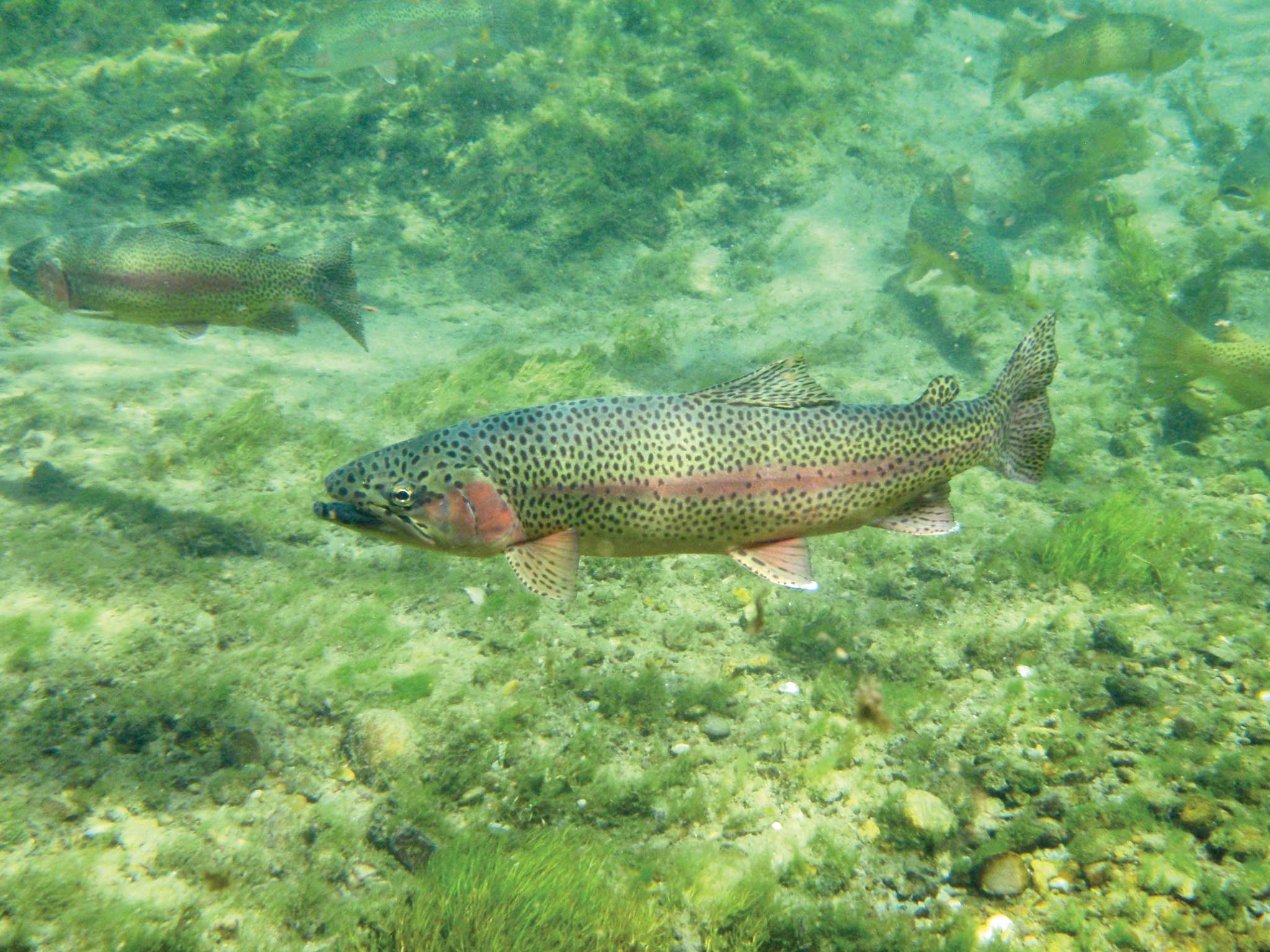As a kid, your grandpa probably told you, “Shh, quiet or you’ll scare the fish!” But can fish hear?
Advertisement
A sound is a disturbance that propagates as sound waves through the surrounding medium, such as water or air. Water, being about 800 times denser than air, transmits sound vibrations more efficiently, and sound travels about five times faster in water than in air.

Fish don’t have external ears like we do, but they do have inner ears inside their head, and their whole body is involved in hearing. A fish’s body is about the same density as water, so sound waves can pass right through. Inside the inner ear are two or three small bones called otoliths, much denser than the rest of the fish, and so move more slowly in response to sound waves. These subtly different movements between the otoliths and the walls of the inner ear are picked up by tiny sensory hair cells, transmitted as nerve impulses to the fish’s brain and then interpreted as sound.
Advertisement
Fish also have a second sensory system called the lateral line. This is a series of specialized cells just under the skin, in a thin line extending from the centre of the gill cover to the centre of the tail. Along this line, there are tiny structures with even tinier hair cells, similar to those of the inner ear, which can detect minute changes in the pressure and movement of the surrounding water. This information is also transmitted to the fish’s brain; it could be as a sound or as the movement of another fish, or even a fishing lure nearby. With these systems, the fish both hears and feels the water.
So, grandpa was right, because from many metres away a fish can easily hear you drop the coffee cup on the bottom of the boat.
Advertisement